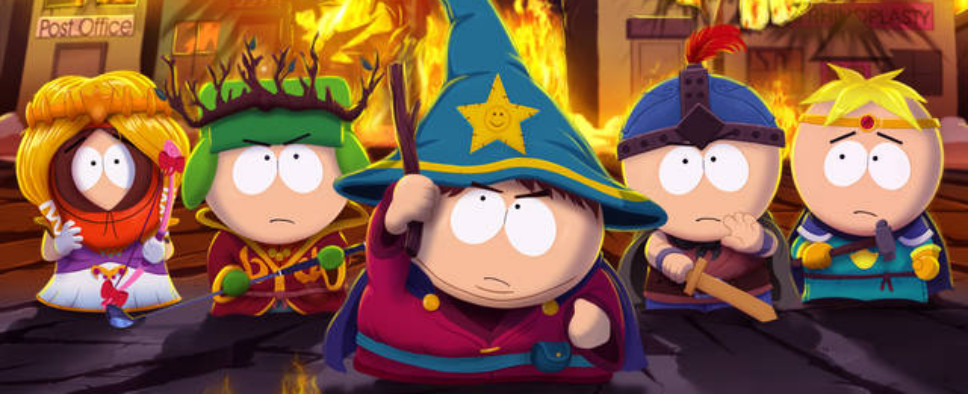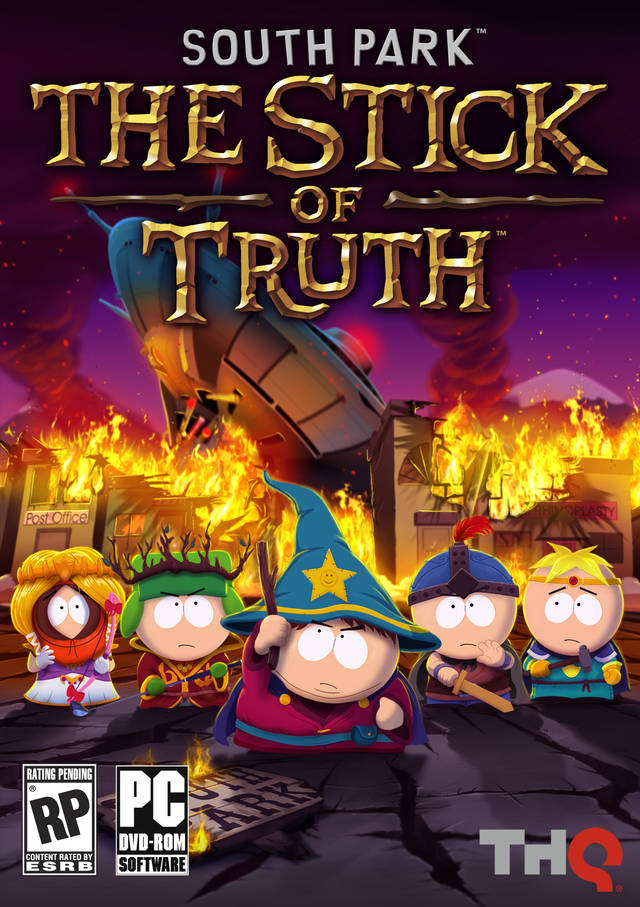South Park: The Stick of Truth Review
-
Category: ReviewsHits: 9871

Article Index
Back when South Park: The Stick of Truth was announced, simply as South Park: The Game, I thought that it was a bizarre idea. As a developer, Obsidian is mostly known for its writing and choices and consequence-driven quest design. Meanwhile, South Park: The Game immediately billed itself as a Paper Mario-like (J)RPG-lite with a true-to-the-show art style, written entirely by show creators Matt Stone and Trey Parker. It simply didn't feel like a good match on paper, as Obsidian has never been known for a focus on art or 2D animation, or for their ability to execute on simple, core gameplay ideas.
Fast forward to 2014 and South Park: The Stick of Truth is out on PlayStation 3, Xbox 360 and PC to fairly good reviews, and I'm left wondering not whether Obsidian was a good match to Matt Stone and Trey Parker, but whether a South Park RPG was the best way to do a South Park game in the first place. But given I'm writing a review, I suppose I should start with what I know: I had fun playing it.
The New Kid has a Power We Have Yet to Understand.
South Park: The Stick of Truth puts you in the shoes of a new kid that has just arrived to South Park, and finds himself (yes, you can only play as a male character) immediately involved in one of the kids' inane games, a Game of Thrones-inspired LARP-y capture the flag variant that replaces an actual flag with the titular "Stick of Truth". Things from there on escalate (or spiral downward, I suppose) in a typical South Park fashion, and more than a few adults find themselves engrossed into what should be a children's game by the end of the story. That's about as far as I'm willing to go in terms of spoilers, because South Park: The Stick of Truth's story and writing really have to be experienced by themselves. The game mixes an arguably excessive penchant for self-reference with the series' typical crass humor, and a biting but occasionally confused satire (also typical of the series, and thankfully in this case it's more hit than misses, given the story is more concerned with surreal antics than being topical), all while also taking repeated potshots at typical videogame structures, devices and clichés.
While I'd be hard-press to call the series consistently excellent, I've always had a soft spot for its humor and irreverent sensibility, and I'm glad to say that the game keeps them intact and fits them to a videogame structure. Stone and Parker deserve high praise for being able to refine comedic timing to a degree that I hadn't seen in many other games before, and certainly never in an RPG. Sure, in the long run some of the NPC barks and boss attacks stop being funny and just become repetitive, but the sensation kicked in far later than I'd have expected, partly, I suspect, due to the game's quick pacing and the amount of unique content included. Pretty much every boss and enemy type has unique attacks, and even status effects fit into the setting. Want an example? "Grossed Out" has the character affected vomiting (and therefore suffer damage) at the end of the turn, due to, well, being grossed out. And at the heart of it all, if one searches enough, there's still the simple story of a kid moving to a new town and making new friends. It just so happens that some of those are talking excrement, gerbils and former presidential candidates. In other words: it's South Park, it crosses the line multiple times, and I (mostly) enjoyed it for that, even if it can't always be argued that it always has something clever to say when it touches controversial subjects.
That said, if I had one criticism of the game's writing, it would be its overall complacency. It's really easy to criticize the videogame industry's lazy "common wisdom" philosophy, and our placid acceptance, as players, of all kinds of improbabilities and empty blabbing, but as comedy writers, it's also lazy of Stone and Parker to take potshots at all these structures without attempting to subvert them in any way. Yes, audio logs have been getting progressively stupider throughout the years (I recently played Bioshock Infinite, which often didn't even attempt to hide the fact that they were often added simply because it was expected, rather than to enhance the game's narrative in any way). Yes, scripted fights whose outcome is the same irrespective of whether you win or lose are insulting. And yes, binary choices in games are meaningless more often than they aren't. But no, I don't think irony is a good excuse to do all of those things, and fill the game of generally funny but simple, and arguably trite fetch quests on top of that. If there's a pro to South Park: The Stick of Truth's shallow quest design, however, is that it shows how important writing, art and music (and I'd take this opportunity to note that the music is also excellent, varied and true to the show) can be to the enjoyment of a title. "Gameplay is king" is a sentence that tends to often be true, but as all truisms, shows its weaknesses in cases like this. Especially because, as I'll soon explain, South Park's actual gameplay isn't exactly strong.
You Have to Wait Your Turn. Like in the Middle Ages, Clyde!
With the exception of a number of generally not too entertaining minigames, South Park: The Stick of Truth's gameplay is divided between side-scrolling exploration and Paper Mario-like combat encounters. Exploration takes place in real time, and gives your character the chance to move throughout town, and punch and fart (yes, you knew this was coming) on pretty much everything you encounter. Later in the game you'll also gradually learn more abilities to use while exploring (which are common to all character classes), including ranged attacks, companion-exclusive actions like Butters' ability to heal injured people, and, well, the ability to unleash various types of farts. Some of these abilities can be used to explore locked-off parts of town later in the game, and to solve some generally easy puzzles at pivotal story sections, although for the most part exploration just consists of navigating environments, taking quests and collecting loot. While I can't really praise this mechanical aspects of the game very highly, the environments are so well-rendered and true to the show that moving your character from point A to B feels rewarding in and of itself.
More importantly, all enemies are visible while you're exploring, and they will actively try to attack you while on the map to trigger an encounter and get the first turn. Approaching them from afar with a ranged attack, however, stuns them, and should you manage to punch them first, you will actually be the one to get the first action. In actual combat encounters, the New Kid is usually (but not always) accompanied by one of the game's six buddies (it's the actual game terminology, I'm not trying to sound hip here), and both characters are under the complete control of the player. Each turn, you get the chance to both examine the enemies (which lets you see all of their immunities, inflicted status effects, buffs and eventual charging attacks), take one free action (using an item or a free special ability) and/or attack. Attacks are divided between normal attacks (there are both melee and ranged variants, and you can switch seamlessly between the two types), special abilities (which depend on your class, and consume Power Points, or PP for short) and magic (which is actually an euphemism for the game's various types of flatulent attacks, which all use Mana, another euphemism whose cleverness is debatable). Pretty much every attack (and every defense, in case you're actually being attacked) requires additional QTE-like inputs to work at full efficacy, usually but not always consisting of timed button presses. The penalty for not being able to execute these inputs correctly can range from a reduction of the damage you inflict to enemies to actual self-harm, but they're generally easy to execute once you get through the often obtuse tutorials.


